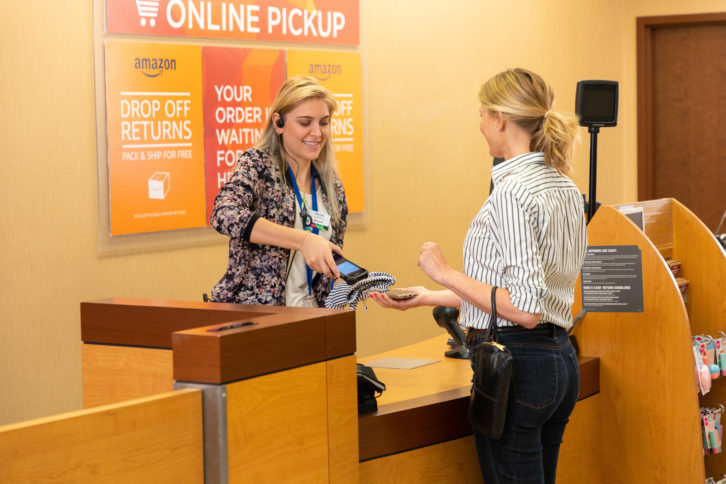
Spencer Kieboom, CEO and Founder of Pollen Returns recently sat down with TWICE to discuss the changing landscape of retail returns and his insights into what retailers are doing to help their customers and bottom line.
TWICE: What are the greatest changes and challenges to the return process you’ve seen in recent years?
Spencer Kieboom: Returns are an opportunity – a way to capture the customer, improve LTV and lower CAC, and free capital tied up in excess inventory. What is best depends on the brand and the retailer, there is no cookie-cutter approach to this problem, the same way delivery is viewed.
TWICE: Do you think consumers assume all retailers have the same return policies? Why or why not?
Kieboom: No. 60% of all consumers check a return policy before making a purchase with an unfamiliar retailer.
Returns are a cloudy convoluted topic to consumers. As a consumer, we have the impression that returns are a personal inconvenience that somehow cost retail hundreds of billions of dollars every year, but we don’t know why they are so expensive. So we assume that everything must be damaged or it has to be the shipping cost.
What retailers are doing about it:

Companies are coming up with different strategies to deter returns. Abercrombie, for instance, charges a $7.00 fee when a return is initiated. However, this is not about covering the retailer’s costs. In reality, the $7.00 doesn’t mean anything monetarily to Abercrombie, whose revenues in 2021 were $3.8 billion. That $7.00 is representing something far greater – a deterrent to the customer to mitigate the return because they have an inventory problem.
Here are some other retailers who have modified their return strategies as a deterrent.
- Kohl’s no longer pays for return shipping costs.
- Bath and Body Works has limited its previously wide-open return policy to 90 days and to $250 per customer over that period.
- LL Bean, Dillard’s, J. Crew, REI, and Zara now deduct a fee for returns made by mail.
- H&M recently announced it is testing a return fee for online orders in some markets.
Other retailers are looking at returns from a loyalty perspective, the more loyal the consumer, the more lenient the policy, thereby tiering for returns. Companies like DSW, Best Buy, and Saks are beginning to segment returns into tiers and rewarding their best consumers. For example, the best customers – based on how much they spend with the retailer annually and how often they return – get perks like free shipping and unlimited returns. Measuring customer acquisition costs (CAC) will be at the top of the list for those entering these waters.
TWICE: How can retailers keep customers happy while minimizing loss and staff frustration with returns this year?
Kieboom: Returns make a direct impact on a buying decision, and also when buying a gift for someone else, 75% of consumers research a return policy before making a purchase.
Retailers need to be cognizant of keeping existing customers and capturing potential customers while also making sure they don’t lose money in the process. So what is the right silo for return policies during the holiday season and the 11 other months of the year to mitigate risk? It comes down to understanding why brands are making returns difficult in the first place, what works best for that brand, and the underlying costs that lie outside the operational boundaries.
TWICE: Should retailers try to mitigate returns? Why or why not? And how can they do this?
Kieboom: Mitigating returns as a whole is not realistic, and even with best efforts, the rate of returns has managed to only increase over time. Retailers typically place the focus on returns in two strategic buckets: Ease and Hurdles. In reality, there should be one bucket: the consumer.
However, retailers must reevaluate every aspect of their reverse logistics process, just like delivery has been addressed, from dispositions, procedures, and resale strategies. This is the only way to fully modernize the dated process and ensure that customers have a positive, consistent experience both in-store and online.
With an economic downturn looming, retailers must evaluate and prepare for 2023. The winners will be those who place the customer first and reap the rewards in 2023 as they adapt their reverse supply chains to their strategic advantage in 2023 and beyond.
TWICE: What tips do you have for turning gift returners into lifetime customers?
Kieboom: Capturing the consumer making a return via a direct purchase or as the byproduct via gift makes it a part of the shopping experience. The return interaction is an extension of how a brand treats its customers.
Ever heard of the person who returned used tires to Nordstrom? Now you have.
If the interaction comes from a new consumer that received an item as a gift, the new consumer will correlate the returns experience to the buying experience. One of the most memorable examples of this is the story of the person returning tires at Nordstrom.
The returns process is a reflection of the shopping experience itself, a shadow of the brand or retailer. An efficient and transparent returns policy can strengthen a brand’s reputation, promoting loyal patronage, as 92% of consumers who have a positive return experience revisit brands for another purchase.
About the Author
Spencer Kieboom is CEO and Founder of Pollen Returns, a technology-led business that empowers D2C retailers to leverage their current inventory for better planning and capital utilization through the quicker recovery of returns.
See also: Looking Back At 2022 And The Year Ahead












